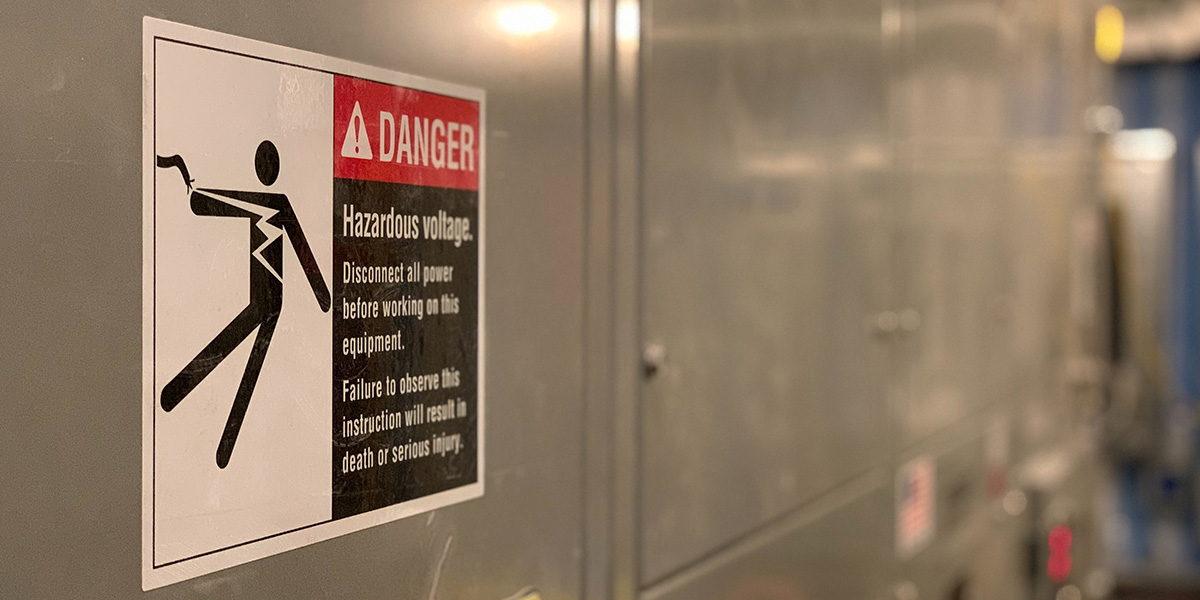Establishing technology resilience

Adopting technology in our daily lives has taken a confident leap over the many decades. Two critical reasons behind this leap are:
- We have led the IT transformation and development revolution globally, and
- The average technology user base has grown tremendously (still going upward).
Additionally, in today’s world, technology is essential for environmental, health, and safety (EHS) management. It can help organizations to collect data, monitor risks, and respond to incidents. However, technology can also be a vulnerability. If technology fails, it can have a significant impact on EHS performance.
That’s why organizations need to focus on technology resilience.
Technology resilience is the ability of an organization to continue to operate effectively even when technology fails. It includes the ability to recover from disruptions quickly and minimize the impact of those disruptions.
Benefits of EHS Technology Resilience
Virtual and remote working has become a real thing. And in the environment of remote working, EHS tech has evolved substantially. Who would have thought that EHS could go remote? But thanks to EHS technology, it did!
Organizations that have yet to adopt EHS tech will struggle to respond to disruptions. The environment and worker safety need to be monitored more closely in the virtual environment.
For example, worker health at home might deteriorate and lead to musculoskeletal diseases.
Therefore, post-adoption of EHS tech, EHS technology resilience has become more essential. The analytics collected from different data can help react to disruptions better and more reliably.
There are several benefits to having a focus on technology resilience in EHS.
It can help to improve safety. This helps to prevent accidents and incidents.
It can help to protect the environment. This can reduce factors that lead to pollution and other environmental damage.
It can help to save money. Resilient technology reduces downtime and repair costs significantly.
It can create an integrated response. Distributed supply chains bring more reliability and create integrated responses.
Essential Things For Technology Resilience in EHS
Technology adoption rate and usage are driven by inherent behaviors and biases that limit its potential. Simply, mandating the usage of a technology or software tool doesn’t understand or eliminate these biases or behavioral hurdles.
Therefore, here are a few things to remember while adopting EHS tech resilience.
User Experience
A well thought and researched user journey towards nudging them into exploring a “better tool” has to be conceived and delivered. User experience matters even when the objectives and outcomes are linked to compliance and regulatory affairs. Again, such development has intimate ties with portraying intuition and presenting it to the user as their own ‘discovery.’
The Transformation Journey
The ‘developer to user journey’ also has a few demands. Semblance, elements of familiarity, and that it should even inculcate ‘journey beacons’ that can let the developers know a specific number of times a user may be digressed or express interest in choosing a different workflow than is constituted within the software technology. However, representing compliance scenarios and forms in more accessible, straightforward, and intuitive formats will lead to better outcomes.
While the onus lies with the ones crafting the technology, offering a consistent experience to the user will ensure that they start formulating a ‘type of brand of memory,’ which is then associated with the software or technology experience. This cultivates a data culture that will ultimately drive compliance and performance objectives.
Monitor and Evaluate
Once you have implemented new technology, monitoring its performance and evaluating its effectiveness is essential. This will help you determine if the technology meets your needs and is worth the investment.
Choose an EHS vendor that is reliable and has a good reputation.
You want to be able to rely on your EHS technology vendor to provide support and updates when needed.
Additionally, there are several things that organizations can do to improve their technology resilience. For example,
- they can invest in robust, reliable technology solutions and develop and implement disaster recovery plans.
- They must train employees on how to use technology safely and effectively.
Organizations can help protect their employees, and environment by improving technology resilience.
How Technology Can Be Used To Improve EHS Performance
Technology can be used to enhance safety processes and comprehensively improve EHS performance.
Let us look at what they are.
Data collection
EHS tech can collect data on various EHS metrics, such as emissions, waste generation, and safety incidents. This data can be used to identify trends, track progress, and make informed decisions.
Risk Monitoring
Technology can be used to monitor risks in real-time. This can help organizations identify and respond to threats quickly before they cause harm.
Incident Response
For example, technology can be used to track the location of employees, identify hazardous materials, and communicate with emergency responders.
When EHS technology is so helpful, what happens when it fails, and what is the impact?
Data loss
Data loss makes tracking trends, identifying risks, and making informed decisions extremely
challenging. This can increase environmental impacts, safety risks, and financial losses.
System outages
Monitoring risks, responding to incidents, and keeping employees safe can be challenging if systems are unavailable. System outages also affect customer service on a large scale which
can, in turn, create pressure on the employees.
Cyberattacks
Cyberattacks can damage or destroy data, disrupt operations, and steal sensitive information. This can increase environmental impacts, safety risks, and financial losses.
Here are some specific steps that organizations can take:
Invest in robust and reliable technology solutions.
When selecting technology solutions, organizations should consider the following factors:
- The reliability
- The ability of the solution to meet the organization’s needs
- The cost
Develop and implement disaster recovery plans.
Disaster recovery plans should include the following steps:
- Identifying critical systems and data
- Developing a strategy to backup and restore vital systems and data
- Testing the disaster recovery plan
Train employees on how to use technology safely and effectively:
Employees should be trained on the following topics:
- How to use technology safely
- How to identify and report hazards
- How to respond to incidents
Organizations can help protect their employees and the environment by taking steps to improve their technology resilience.
Conclusion
Technology implementation has its pros and cons. But in EHS, tech has seen wonders and done magic in the safety field. There are numbers to prove that the digitalization of safety has positively impacted the EHS performance of a workplace. But it is also necessary to be prepared for downtimes and when technology cannot support our processes.
Right from using a cloud-based solution and having a backup plan, it is necessary to have a proper process in place so that the technology setback does not rupture the business environment. And when it comes to EHS, one must be prepared with all possible solutions.
But adding to it, organizations should also keep their software updated and regularly monitor the system for signs of trouble or delay so that the technology downtime is detected before it turns into a loss.
Thus, with these steps, you can improve the resilience of your EHS technology infrastructure and protect your organization from environmental, health, and safety risks.
Frequently Asked Questions
1. What does the term “EHS Technology” mean?
EHS technology is a software or automation solution that helps organizations comply with environment, health, and safety (EHS) guidelines issued by local and government authorities.
2. What does an EHS Technology group do?
EHS technology group is an organization that helps with EHS technology and its related services. It is a house for a consulting group that ensures the organizations are compatible with EHS guidelines.
3. What is EHS Technology Resilience?
Technology resilience is the ability of an organization to continue to operate effectively even when technology fails. It includes the ability to recover from disruptions quickly and minimize the impact of those disruptions.


